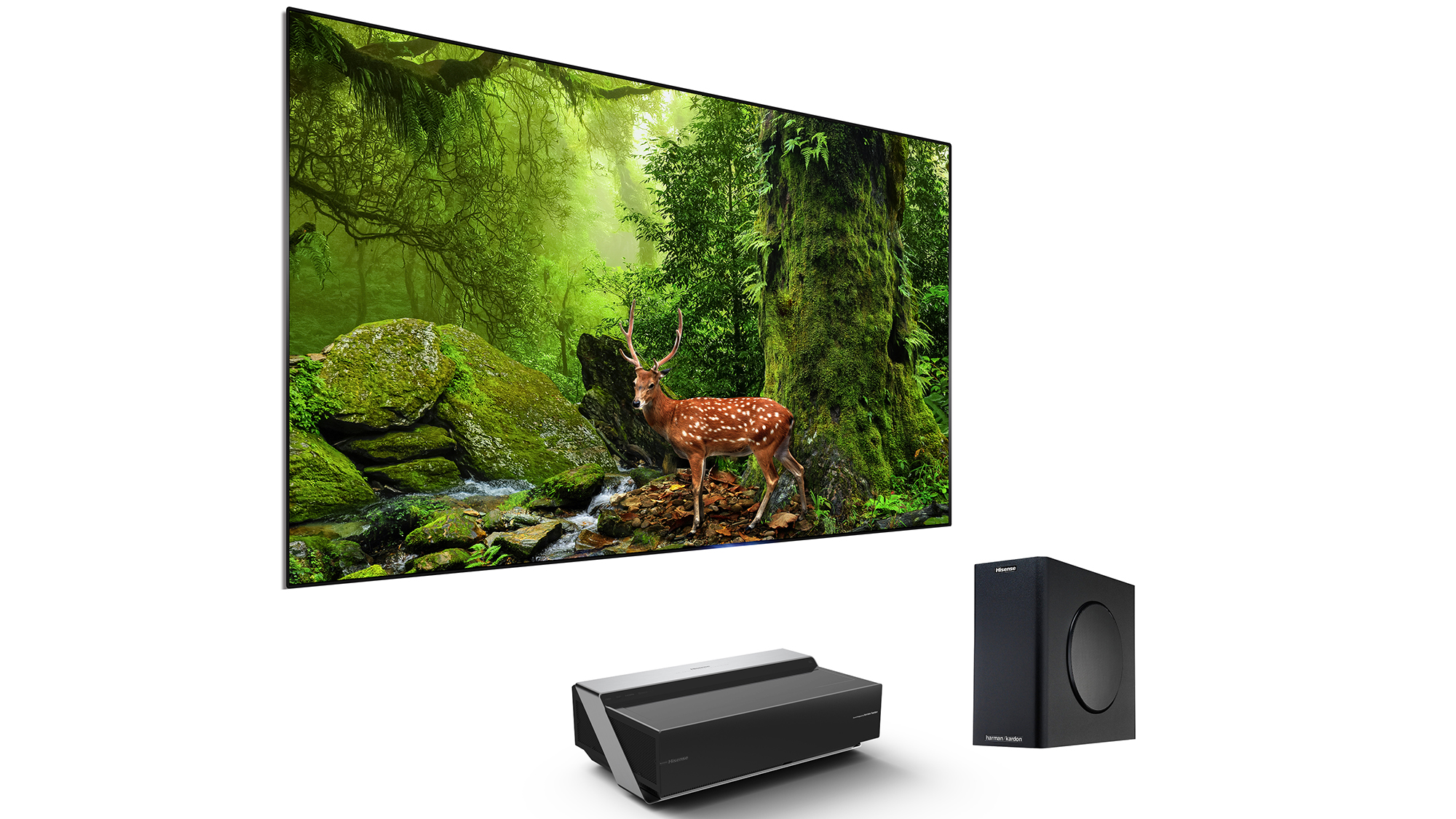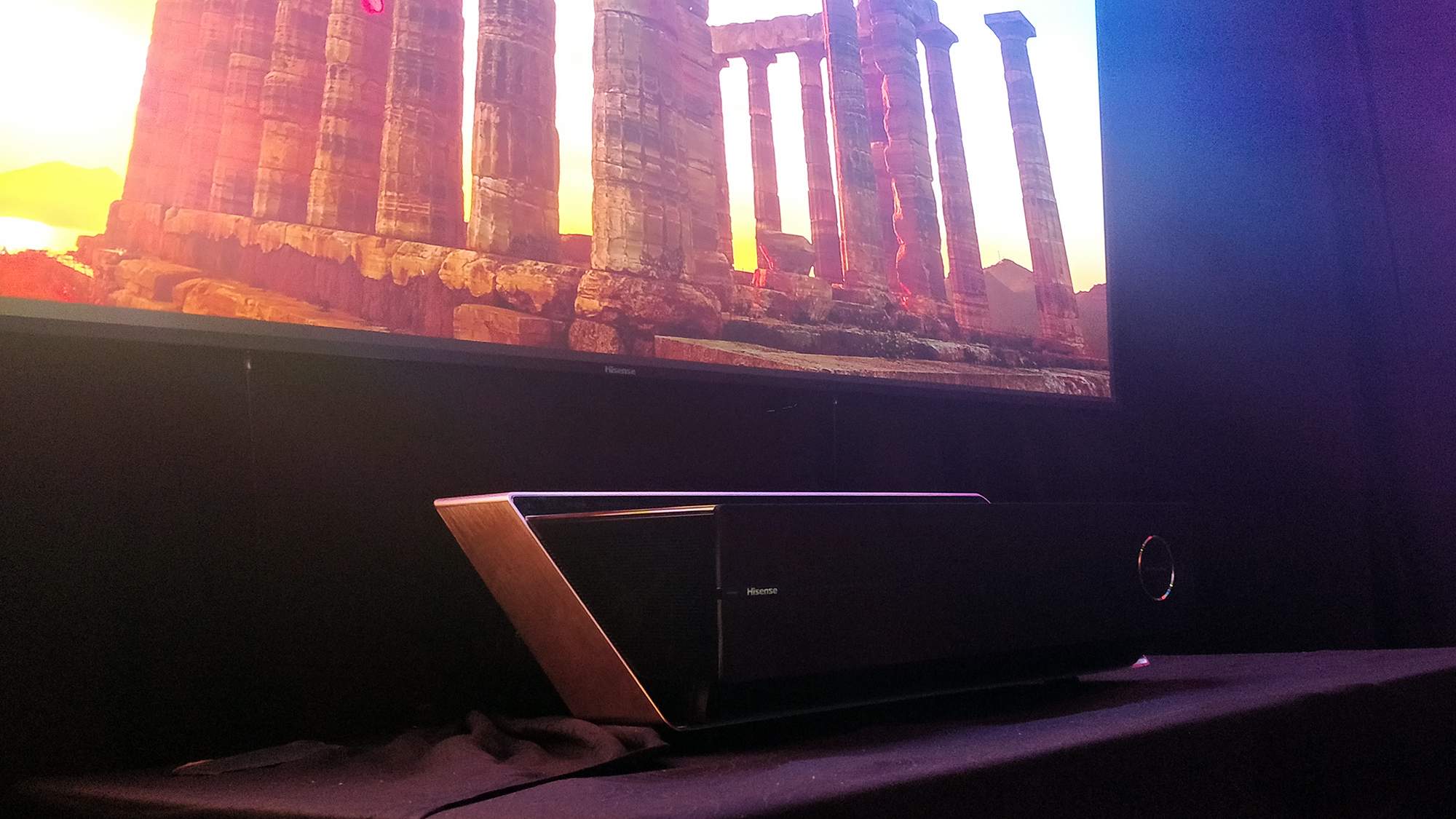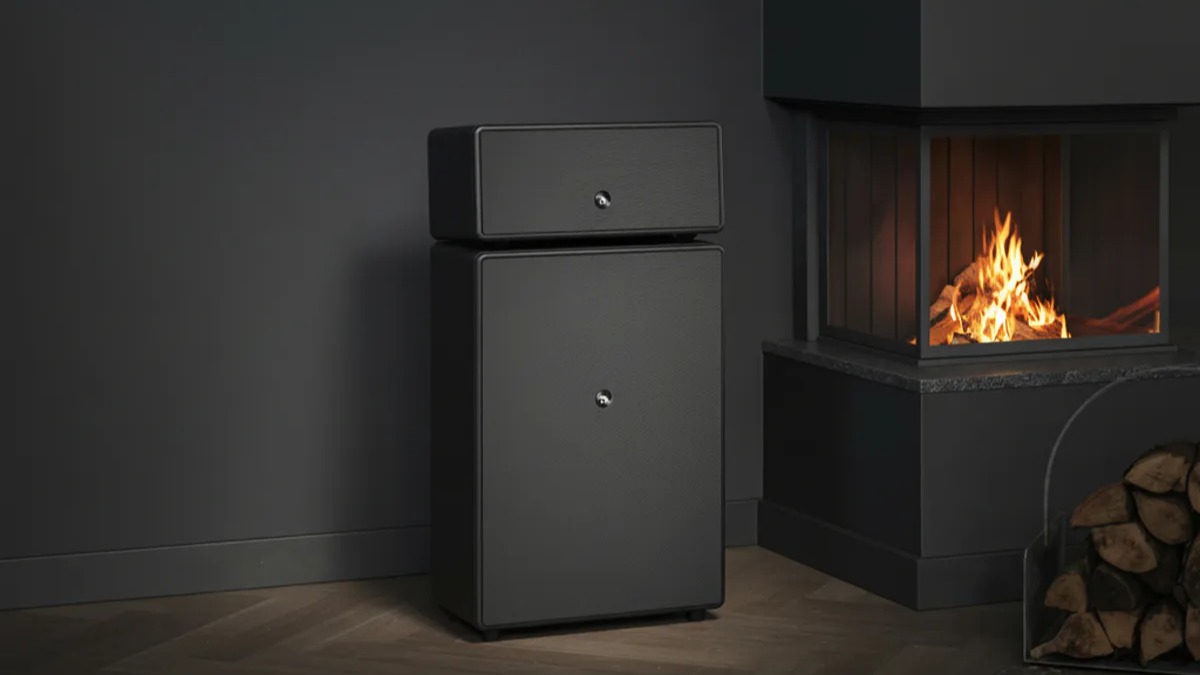Hisense reveals 100in 4K TriChroma Laser TV with Harman Kardon sound
Now with three lasers, not two

Unlike an age-concerned birthday boy on his 50th, Hisense is celebrating its half-century anniversary this year with a spring in its step - supposedly off the back of a successful 2018. The Chinese TV brand had its biggest year of sales, hitting a milestone of 20 million sets worldwide. It's just finalised an agreement to be a partner of Euro 2020, too.
It also has a new 2019 TV range to shout about.
While LG, Sony and Panasonic root for OLED, and Samsung has QLED, Hisense has for the last few years pedalled ULED and 'Laser' TVs - both of which featured heavily in Hisense's 2019 CES press conference today.
For the uninitiated, the latter, which made its way into the world in 2014, isn't your average TV, but instead a laser projection system beaming to an anti-reflective optical screen.

While the recently released Hisense Dual Colour Laser TV (L10E) used red and blue laser light sources to produce the spectrum of colours, Hisense's forthcoming 4K TriChroma Laser TV (100L7T) adds a third (green) laser for wider, more accurate colour reproduction.
It's also 100in (Hisense is currently working to produce a 150in and 70in Laser TV) and features a 100-watt Harman Kardon 100 watts sound solution.
In addition to a TV tuner, the TriChroma Laser TV utilises the CIDA smart platform to offer a range of apps.
The latest hi-fi, home cinema and tech news, reviews, buying advice and deals, direct to your inbox.
Hisense began its press conference by stressing the importance of a TV's content delivery, which turned out to be an ideal set-up for its next-gen 2019 ULED TV range, which will include models based on either the Android and Roku smart TV platforms.

The next-gen models have a next-gen name: ULED XD TV, which represent Hisense's new proprietary chipsets, image processing algorithms and panel advancements. Uniquely, the dual-cell ULED XD panel layer a 1080p module displaying a grayscale image between a full-array LED backlight and a 4K module displaying a full colour image, which Hisense says bolsters performance in colour and dynamic range, and provides upgrades in local dimming for improved contrast control.
The new models – all available by the summer – peak at the 75in U9F ($3500), which is capable of a 2200-nit brightness, has 1000 local dimming zones, supports Dolby Vision, HDR10, and features Harman Kardon sound and Amazon Alexa and Google Assistant voice control.
Then there's the 55in ($699) and 65in H9F ($1000) with a 1000-nit brightness ULED with Quantum Dot panel. The H8F, meanwhile, is based on Android TV and also supports both HDR formats, priced $400 for the 50in and $750 for the 65in. In second half of the year, there will also be a Roku TV version of the H8F.
MORE:
LG unveils rollable Signature OLED TV R at CES 2019

Becky is a hi-fi, AV and technology journalist, formerly the Managing Editor at What Hi-Fi? and Editor of Australian Hi-Fi and Audio Esoterica magazines. With over twelve years of journalism experience in the hi-fi industry, she has reviewed all manner of audio gear, from budget amplifiers to high-end speakers, and particularly specialises in headphones and head-fi devices.
In her spare time, Becky can often be found running, watching Liverpool FC and horror movies, and hunting for gluten-free cake.
